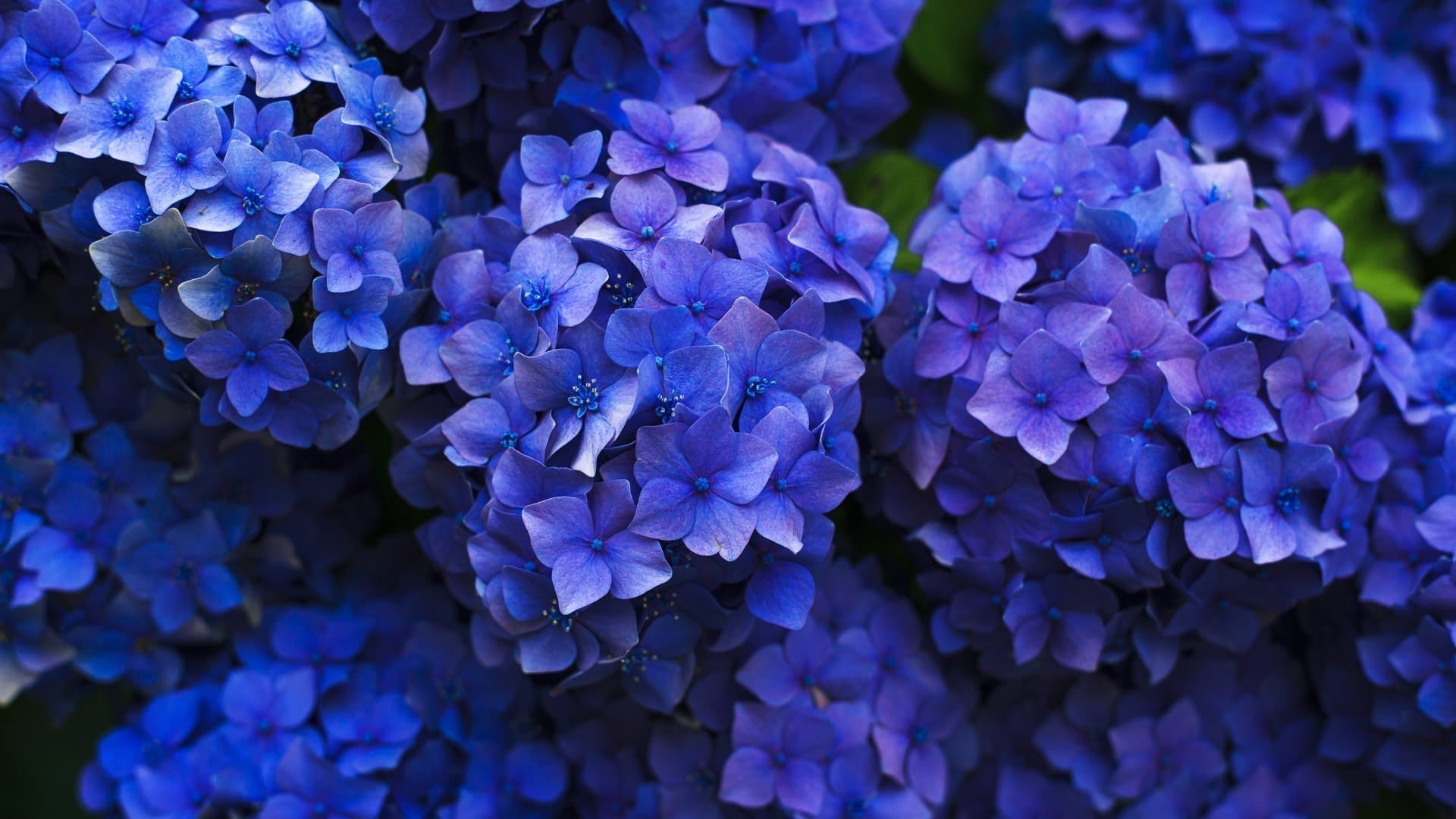Hydrangeas are flowering shrubs from the genus Hydrangea, valued for their large, showy blooms and ability to change color based on soil pH. Native to Asia and the Americas, hydrangeas are widely cultivated in temperate zones but can also be successfully grown in Florida’s diverse climate zones, from North Florida’s cooler winters to South Florida’s humid tropics.
While certain species struggle with Florida’s intense heat and humidity, several types—including Hydrangea macrophylla (bigleaf), Hydrangea paniculata (panicle), and Hydrangea arborescens (smooth)—can adapt with proper placement, soil conditioning, and moisture control. Key factors for success include selecting heat-tolerant varieties, providing morning sun and afternoon shade, and maintaining well-drained, acidic soil.
Do Hydrangeas Grow in Florida?

For gardeners wondering “Can hydrangeas grow in Florida?”, the answer is yes—with the right approach, these beautiful blooms can thrive throughout the state’s USDA Zones 8–11. Paired with appropriate care, heat-tolerant ones will be a great choice in Florida’s climate as it usually posits challenges in high heat, intense humidity, and sandy soils. It's a good thing there’s no problem thoughtful planning can’t fix. Proper care and maintenance for hydrangea are the key.
What Are The Climate Preferences for Hydrangeas in Florida?
The plants must maintain specific climate preferences to keep the hydrangeas healthy and thriving. Among them are the following:
- Hardiness Zones: Hydrangeas usually grow in USDA Hardiness Zones 3-8, but if received the proper care, some varieties can flourish in Florida’s Zones 9-10.
- Heat Tolerance: Although hydrangeas are better in cooler climates, certain heat-tolerant varieties can withstand the summer temperature in Florida. Providing afternoon shade and consistent watering is also essential to keep it healthy.
- Humidity: Hydrangeas can handle a certain amount of moisture only, so the soil where the hydrangeas are planted must be well drained at all times. This will prevent the roots from rotting. To further improve drainage, the sandy soil of Florida can be amended for this purpose.
- Winter Chill Requirements: Most varieties of hydrangeas require cold winters and dormancy to bloom fully. Milder winters in Florida will likely limit the bloom production of some varieties. If you live in Zone 9b or anywhere nearby, choosing varieties that need minimal chilling is essential.
What Are Climate Challenges for Hydrangeas in Florida?
Since Florida is a subtropical country, its climate condition poses several challenges for growing hydrangeas. The following are some of these and ways to combat it:
- Summer Heat and Humidity: Florida's intense summer heat and humidity can stress hydrangeas. Without proper shade or irrigation, these plants may quickly fail to grow or wilt. Mulching and consistent watering are essential to prevent heat stress in these blooms.
- Limited Winter Chill: Certain hydrangea varieties require winter chill to survive. However, in some regions of Florida, particularly those in Zone 9b, adequate chilling hours may not be available for these varieties. Therefore, choosing varieties that do not solely depend on extended dormancy for their health growth is better.
What Are the Best Hydrangea Varieties for Florida?

On the other hand, some varieties are well-suited to Florida's challenging climate.
Maybe you're interested: Learn how to arrange hydrangeas

Want a Hydrangea Arrangement as Unique as You Are?
Let our florists craft a one-of-a-kind Designer’s Choice bouquet, inspired by the beauty of Hydrangeas and tailored with seasonal blooms just for you.
Order Designer’s Choice NowHeat-Tolerant Varieties
These hydrangea varieties could withstand or grow better in areas with extreme heat or hotter temperatures.
- Oakleaf Hydrangeas (Quercusfolia): This variety is known for its unique foliage and heat tolerance, making it a top choice for Florida gardeners. Its ability to thrive in hot conditions makes it perfect for the state's climate.
- Smooth Hydrangeas (Arborescens): These varieties are known for their heat resistance and can bloom consistently, even in the hot Florida climate. They perform well despite the high temperatures.
- PeeGee Hydrangeas (Paniculata): This variety is known for its large, conical blooms and impressive resilience, thriving even in hot climates. They are widely appreciated for their ability to withstand high temperatures.
Other Varieties
- Endless Summer Hydrangeas: Because of their reblooming abilities, they are versatile and suitable for Florida's climate. Their continuous blooming provides lasting color, even in the heat.
- Climbing Hydrangeas: They are suitable for shaded locations and trellises. Their lush, climbing vines and attractive blooms add beauty to vertical spaces.
- Bigleaf Hydrangeas (Macrophylla): Although these are more heat-sensitive, they thrive in Florida with enough hydrangea care. Providing shade, consistent moisture, and protection from extreme temperatures can help them flourish in the state's climate.
How to Grow Hydrangeas in Florida?

Hydrangeas have different meanings based on their colors, generally conveying heartfelt emotions, gratitude, and renewal. Their vibrant blooms can enhance any garden, making them a popular choice among Florida gardeners. To successfully grow healthy hydrangeas in Florida, it’s important to follow the steps below, ensuring that you nurture their unique beauty and symbolism.
Choose Heat-Tolerant Varieties
Choose varieties that are adaptable to the climate of Florida. These could be varieties like Oakleaf, Smooth, or PeeGee hydrangeas.
Amend the Soil
The soil's pH level affects the color of the hydrangea blooms. Acidic soils with pH levels below 6 produce blue flowers and alkaline soils above seven yield pink ones. A soil test helps determine the soil's pH level and is amended with sulfur and lime accordingly.
Hydrangeas can grow in sandy soil, which is common in many parts of Florida, but it requires amendments to improve water retention and fertility. Mix in organic compost, peat moss, or coconut coir to help sandy soil hold moisture and nutrients. Since sandy soil often leans alkaline, you may need to lower the pH using sulfur or pine bark mulch to create the slightly acidic conditions (pH 5.5–6.5) hydrangeas prefer. Regular mulching also prevents water loss during hot months.
Planting Techniques
Plant the hydrangea in a shaded location, away from the intense heat of the afternoon sun. Ensure that the planting hole is double the width of the root ball. This will allow the plant's roots to spread and grow healthy.
Water Appropriately
Hydrangeas require moisture, especially during dry seasons. Drip irrigation is an ideal way to reduce surface evaporation. Mulching around the base will also help the soil retain moisture and regulate its temperature.
Fertilize the Soil
From spring to summer, use a balanced, slow-release fertilizer. Follow a consistent fertilization schedule to promote healthy, vibrant hydrangea blooms.
Prune Damaged Wood and Leaves
Prune the hydrangea to improve its shape and size, especially during the peak blooming period. Remove dead or damaged wood to encourage new growth and reduce the risk of pests infesting the plant.
Protect from Heat
Provide ample afternoon shade to the plants to shield them from the sun's harsh heat. Apply a layer of bark mulch to reduce surface evaporation and control the soil's temperature.
Add Soil Acidifiers
Soil acidifiers like aluminum sulfate or sulfur can make the soil more acidic, which helps turn hydrangeas blue or purple. Garden lime can make the soil alkaline and produce pink or red blooms. Organic materials like peat moss, pine needles, and coffee grounds can lower soil pH.
Monitor for Pests and Diseases
In humid climates, watching for pests and diseases like powdery mildew and spider mites is essential. Regularly check your plants, remove affected leaves, and use appropriate treatments to keep your garden healthy.

Want a Hydrangea Arrangement as Unique as You Are?
Let our florists craft a one-of-a-kind Designer’s Choice bouquet, inspired by the beauty of Hydrangeas and tailored with seasonal blooms just for you.
Order Designer’s Choice NowFrequently Asked Questions
1. Will hydrangeas grow in full sun?
Yes, hydrangeas can grow in full sun, but it will also depend on the variety of plants you are planting and the local climate conditions where you’re planting. If you are in Florida, read the article above to know more.
2. When do hydrangeas bloom in the northeast?
In the Northeast, hydrangeas typically bloom from late spring to early fall, but it will also largely depend on what variety you are planting and the growing conditions it requires.
3. When is the best time to plant hydrangeas in Florida?
The best time to plant hydrangeas in Florida is in early spring (February to March) or early fall (September to October). This allows the plant to establish strong roots before facing the stress of summer heat or unexpected winter chills. In North Florida, spring planting is ideal. In Central and South Florida, fall planting gives better root development while avoiding peak heat.
4. How heat-tolerant are hydrangeas in Florida?
Hydrangea heat tolerance varies by type. Hydrangea paniculata and Hydrangea arborescens tend to be more heat-tolerant, making them suitable for most of Florida. Hydrangea macrophylla can still grow in Florida but needs morning sun and afternoon shade, plus extra care during extreme heat. Mulching and consistent watering are essential for maintaining healthy blooms in Florida’s hot and humid summers.
5. Can I grow Endless Summer hydrangeas in Florida?
Yes, Endless Summer hydrangeas are well-suited to Florida gardens. They are a reblooming bigleaf variety (Hydrangea macrophylla) that can flower on both new and old wood. Endless Summer hydrangeas perform best in Zones 8–10 when given partial shade, good soil, and consistent watering. In South Florida, some afternoon shade and mulch can help reduce heat stress.
6. Is Limelight hydrangea good for Florida’s climate?
Yes, the Limelight hydrangea (Hydrangea paniculata) is one of the best choices for Florida gardeners. It is highly heat-tolerant, blooms reliably even in full sun, and thrives in USDA Zones 3–10. Its cone-shaped blooms and sturdy structure make it an ideal, low-maintenance flowering shrub for Florida’s landscape conditions.

